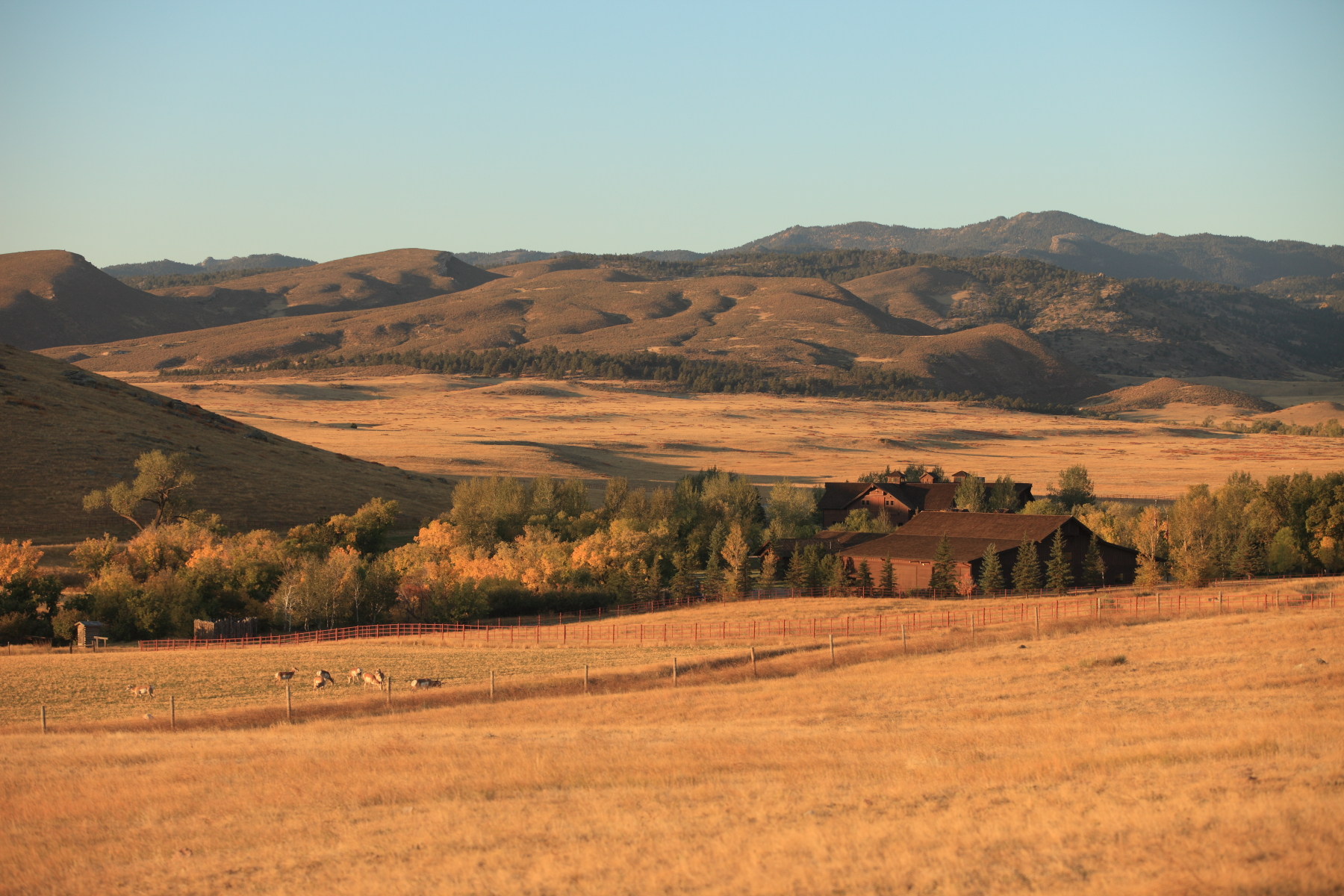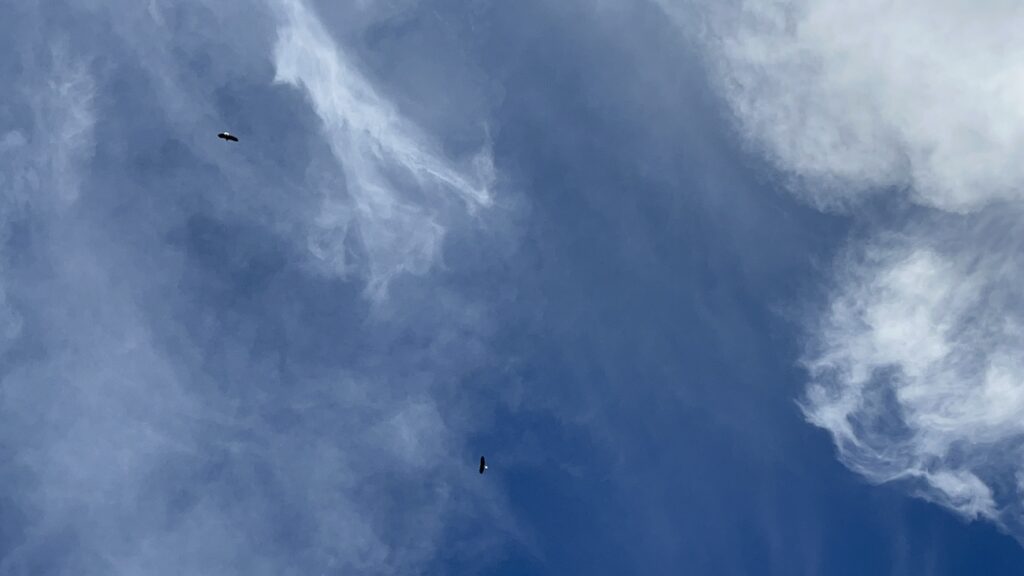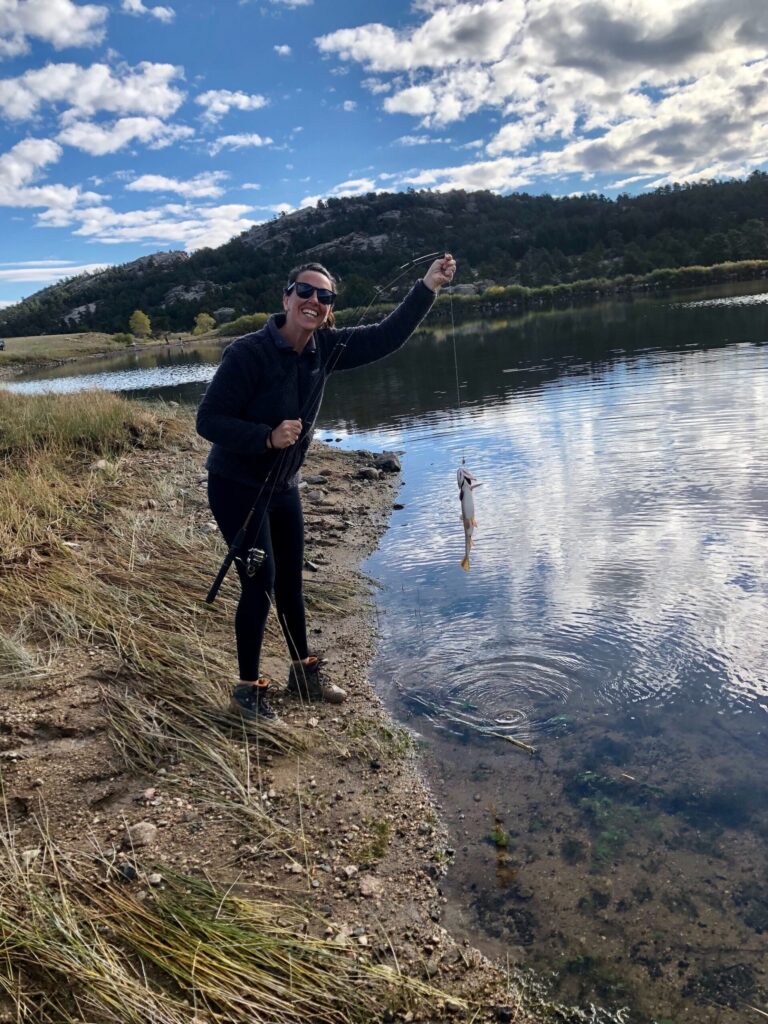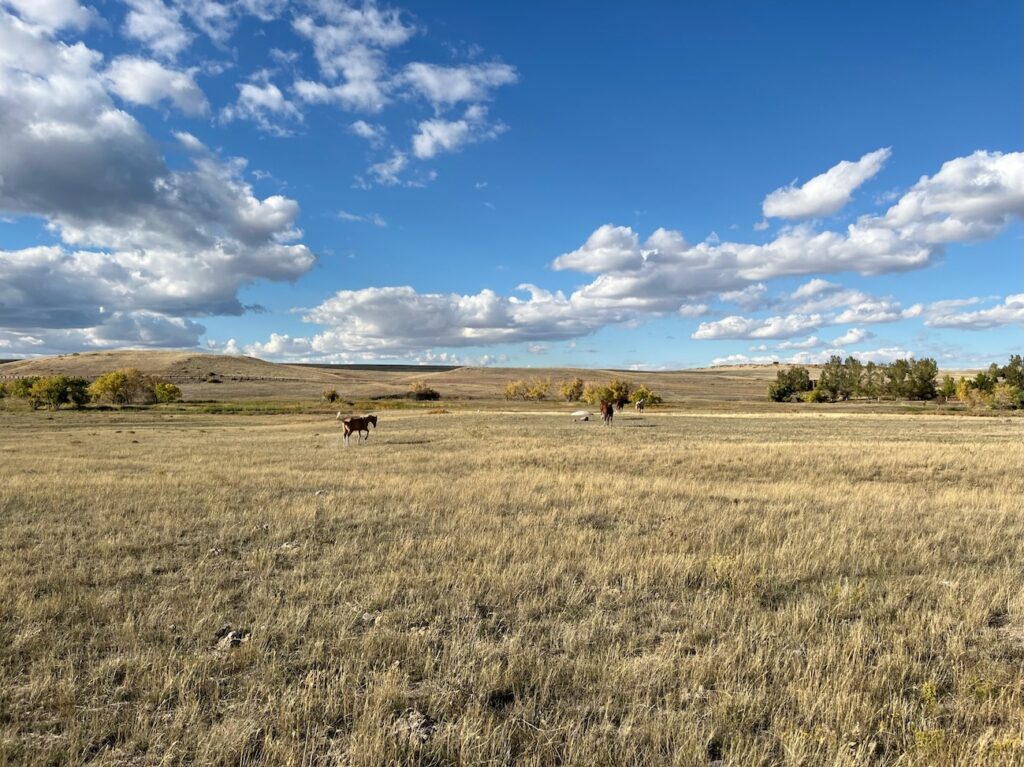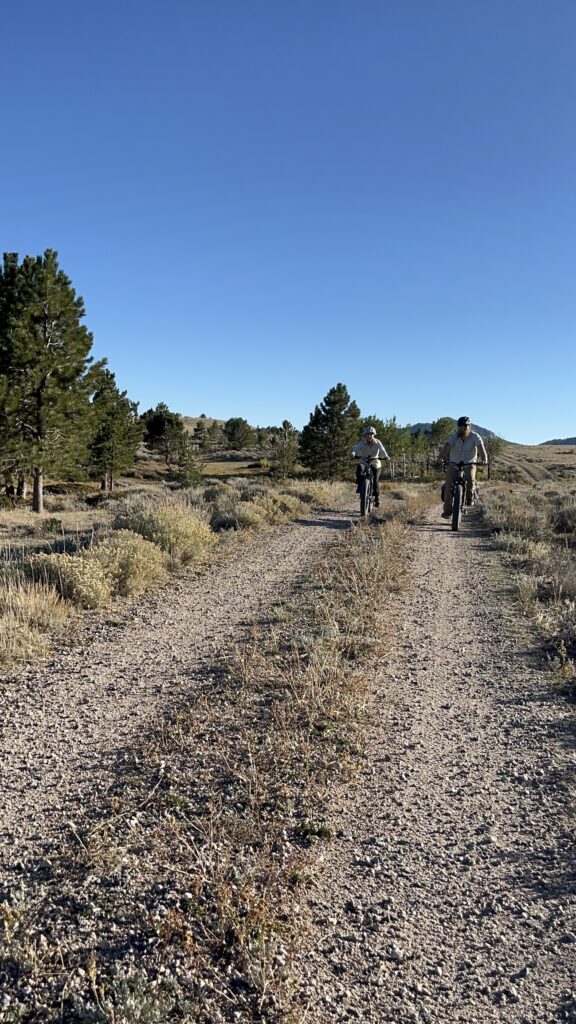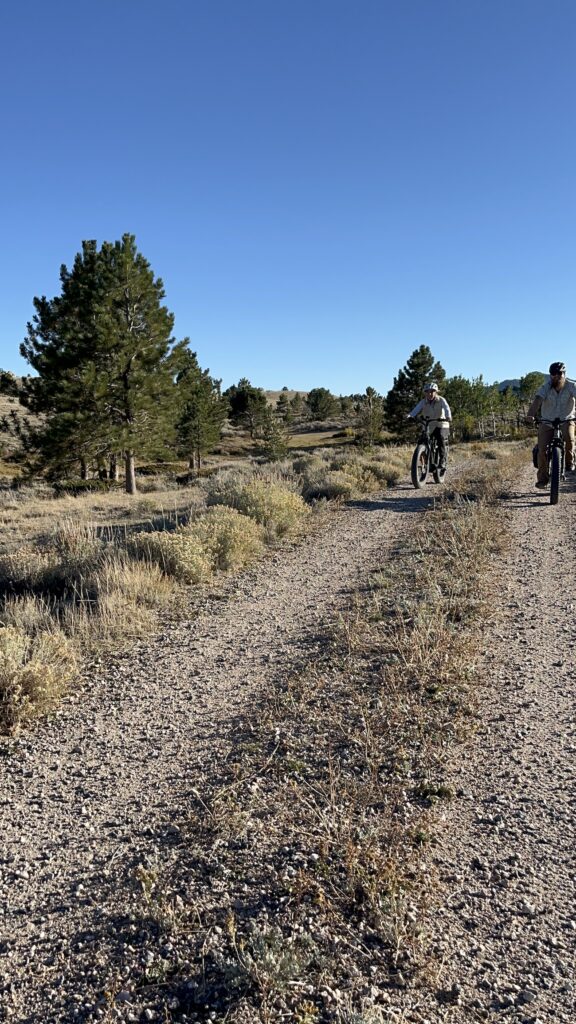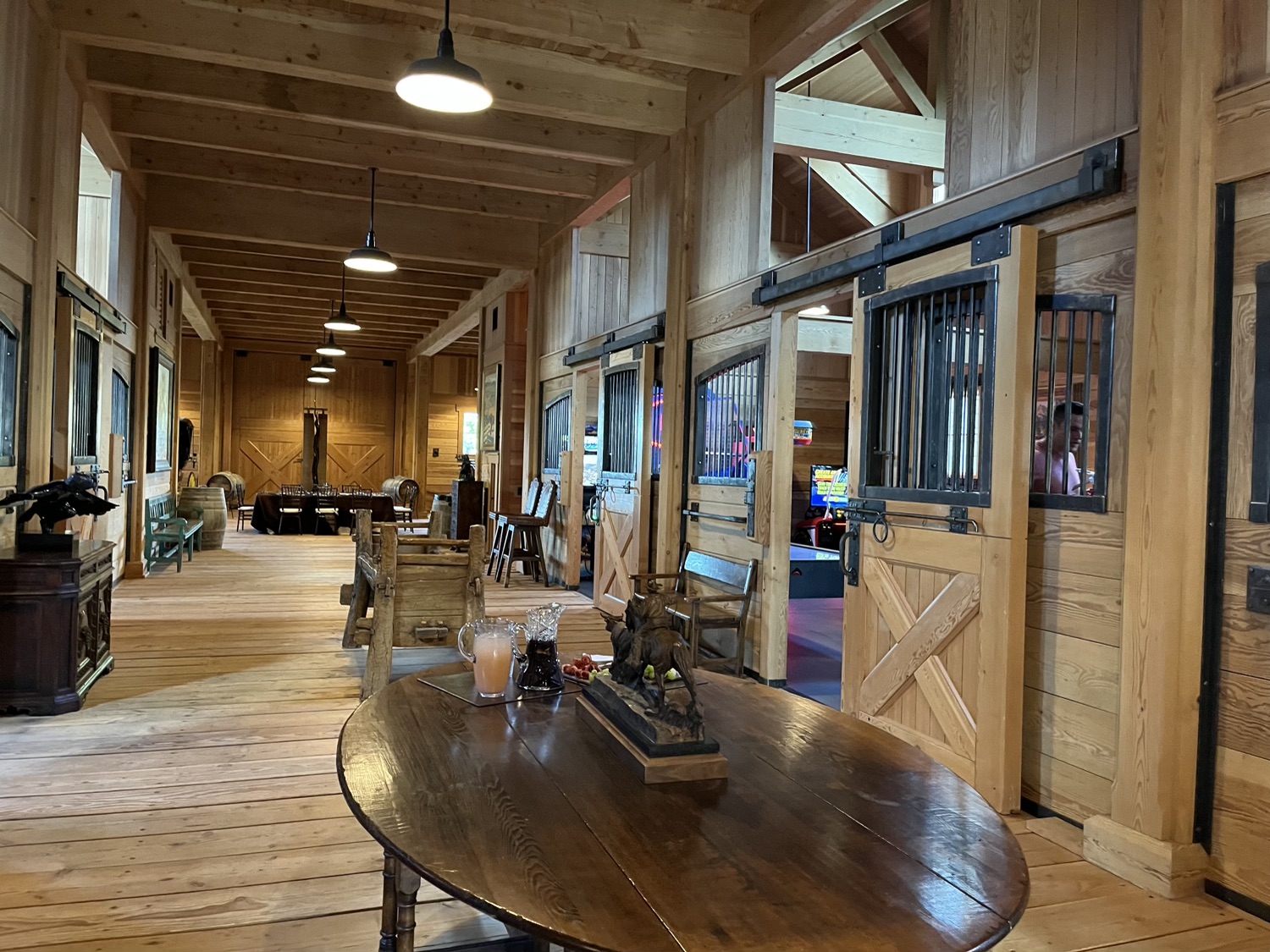I’ll meet you by the buffalo wearing pajamas,” the text message read. The plane was still taxiing down the small runway, and my phone pinged repeatedly. I wondered if it was an auto-correction or what it might mean, but I didn’t spend much time on it as the next message popped up. It was from Mitch, the head of hospitality for Wagonhound, who had helped me arrange the trip. He had recently sent some rather intimidating driving directions that had conjured up images of long empty roads without signs, tumbleweeds, and vultures circling. “Don’t worry about those directions,” Mitch said. “The CEO of Wagonhound was on your flight, so you can just follow her.”
I was nervous and had no idea how I would recognize her, even on such a small flight from Denver to Casper. We walked into the tiny airport past a big statue of a buffalo wearing pajamas. Ok, well, that settled that. And there was my traveling companion, my stepmom Betsy, in for this journey from her farm in Vermont. We hugged and walked over to the one and only baggage claim belt. As I waited for the rental car, checking anxiously around for someone that looked like a CEO, I looked back over to baggage claim, and there was Betsy, chatting with Andrea Nicholas Purdue. I knew even before I noticed her crisp Wagonhound-branded jacket; she radiated energy, poise, and authority, lighting up the dim, low-ceilinged room as she talked with my stepmom like old friends.
A Long History of Land Stewardship
Andrea’s family history stretches back to the ranches of the 1800s, with relatives on her father’s side working as the last generation to use all horsepower. “It’s amazing to talk to them about that. We have a bunch of old photos of them on the farm,” she told us excitedly. Her father was raised on a cattle ranch in Nebraska, where his dad was the general manager. “His big focus was soil health,” she continued. “He grew up during the Dust Bowl and really saw what happens if you don’t have soil health. He was a soil scientist and focused on the health of the land. That really sunk in with my dad and became one of the core values here at Wagonhound: caring for the land; partnering with it.”
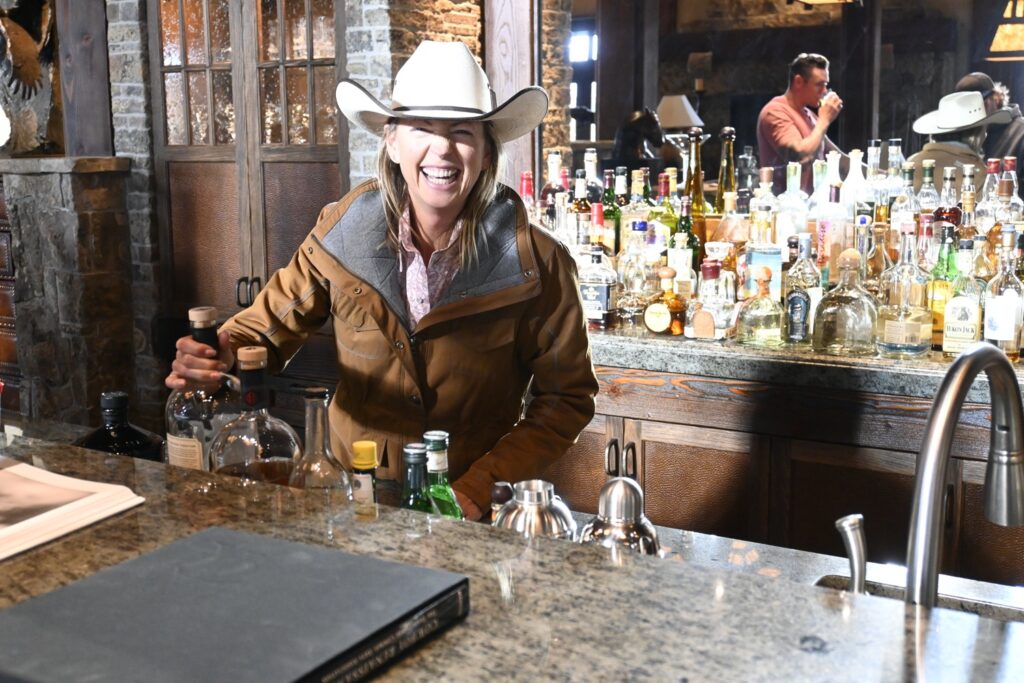
After moving to San Diego with the Navy, Andrea’s father started an investment firm there, and when he could, he returned to ranching, first in Montana and then by building Wagonhound in the late 1990s. It was initially a reassembly of several small historic ranches in the area that had broken up over time. The Wagonhound Holdings now sit on about 300,000 acres as a commercial ranching operation. “We raise Red Angus and have a farming operation as well,” explained Andrea. “We grow alfalfa hay that we use internally and have a feedlot and the horse operation. The genesis of the horse operation was to raise a great ranch horse for the cowboys to use. They’re extremely athletic in the performance arena too. We have cutting and reining lines and are well-known for our success in Western competition.
Connection to Nature
“I came on board a couple of years ago; my career up until that had always been in finance,” explained Andrea. “But ranching was obviously a big part of our lifestyle growing up. And when I came in, it was a good time to look at the business and decide where to move forward and where to pull back. The lodge wasn’t used much in the summer, and I thought that was a great opportunity to invite guests. I feel very strongly about the connection between humanity and nature. It’s really powerful. The lodge was a way to touch more people, to invite families, friends, or business colleagues in to experience what it’s like to be in the middle of nowhere and connect to the land around you. It’s a butterfly effect, even if it just makes you breathe for a second, to feel joy in being outside. And then, you know, maybe you treat the gate agent at the airport just a little kinder or have a little more patience. That can really spread.”
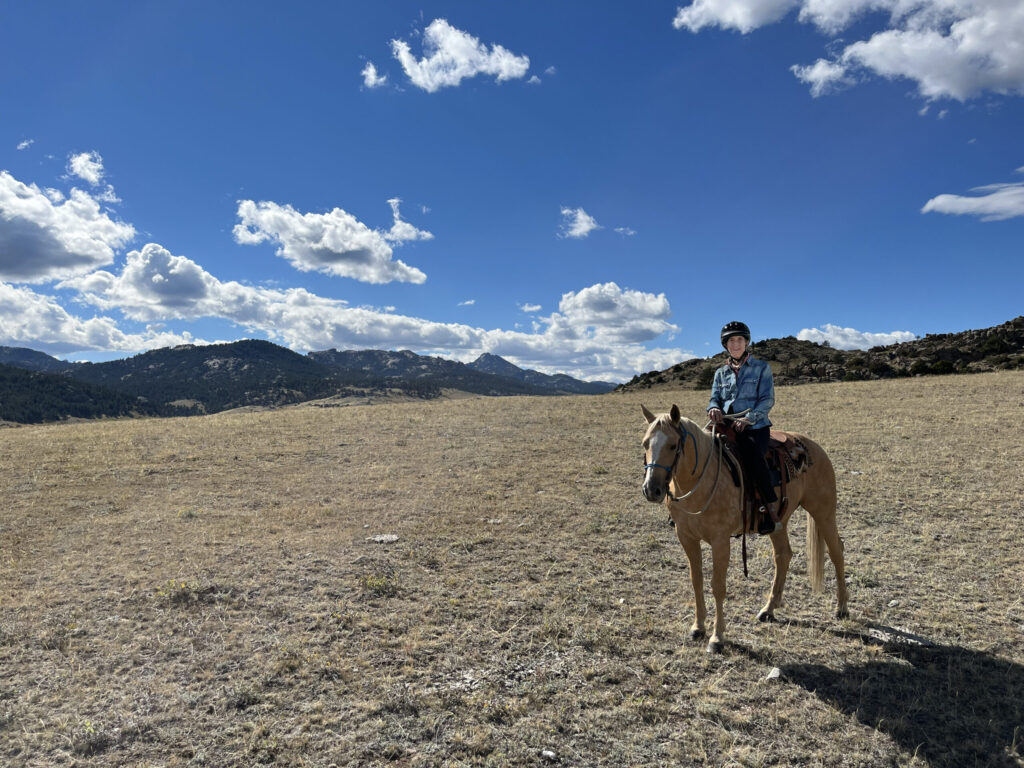
As we walked around Reid Creek Lodge, the drama of the sky with high clouds catching the rainbow and red sunset felt like a performance scheduled for our arrival. The silence was incredible. Even the gravel underfoot made a sound so distinct in the quiet that my ears picked it up in detail I’d never experienced. No cars, lights, people, or signs of population in any direction; it was easy to imagine looking out over these quiet lands hundreds of years ago.
Reid Creek Lodge
The 8,000-square-foot lodge was an existing ranch building, recently renovated to accommodate guests. Unlike a hotel, the lodge’s open floor plan is cozy and familial, centered around the large fireplace and long dining table. Guests share the house and eat together, so they are typically a group, such as a large family looking for space for everyone to stay together, a business team on a retreat, or friends seeking an adventure. Rates start at $15,000 a night, which includes a private chef and a wide range of activities in a customized itinerary.
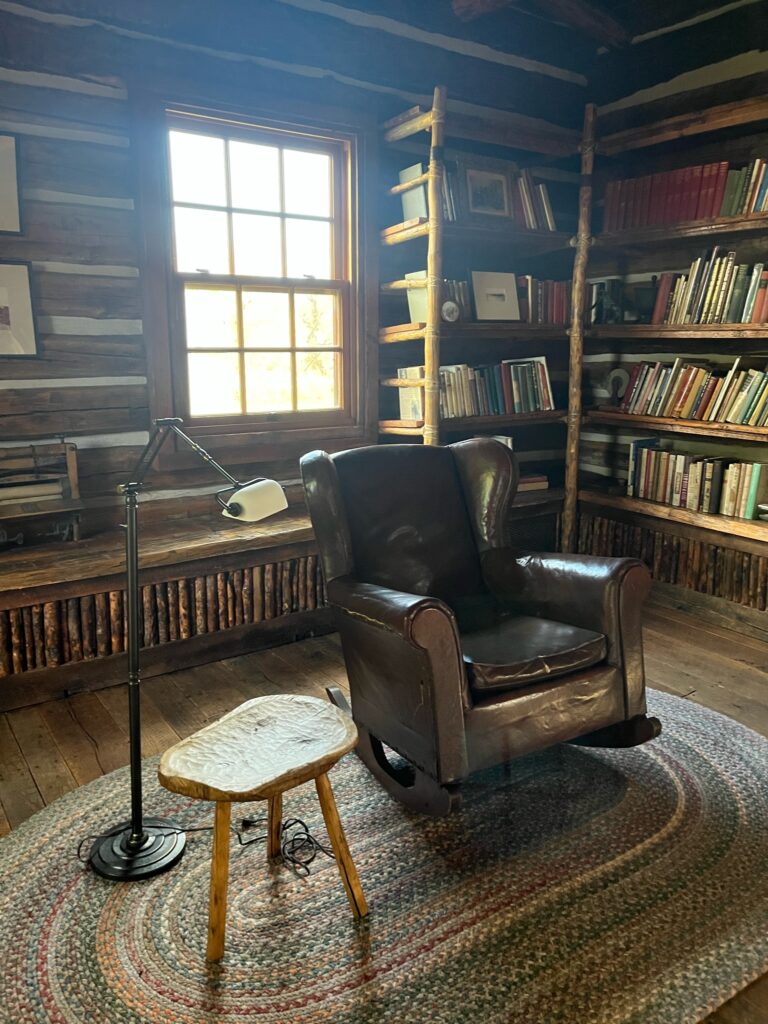
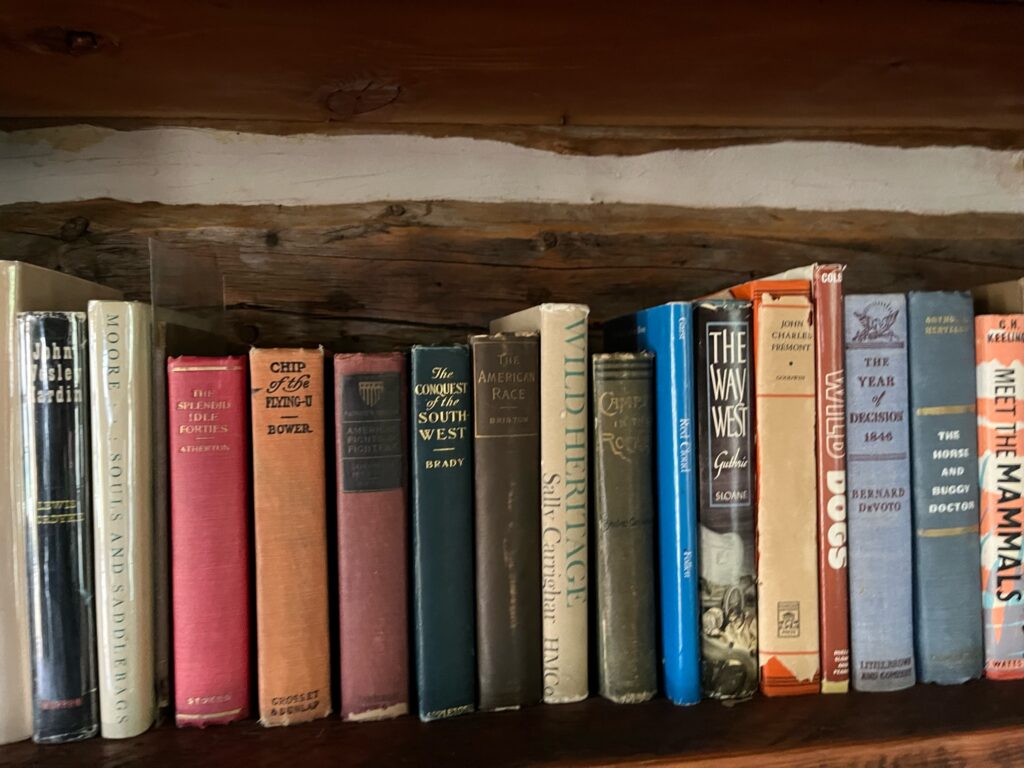
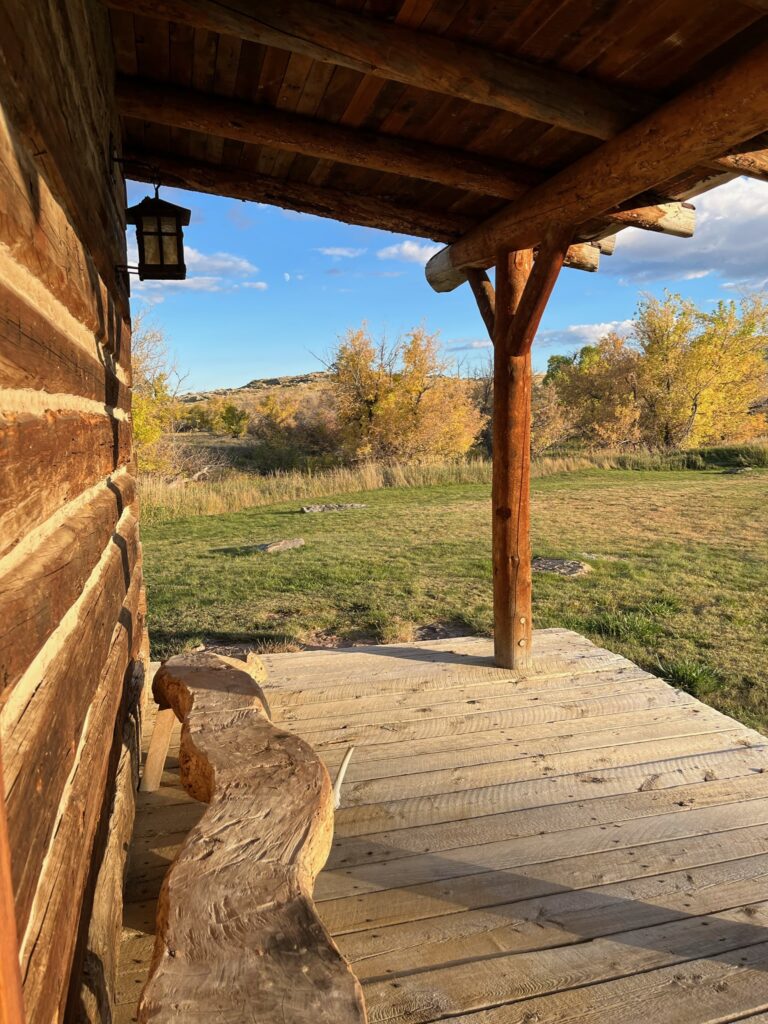
We stepped inside, greeted by Mitch McElwain, the head of hospitality for the lodge. He introduced us to our private chef (who soon became like a friend on the trip) and showed us around the lodge and to our room. Mitch glowed with enthusiasm for the property and his job. He grew up on and around Wagonhound. His brother now runs the ranch’s outfitting operation. Fascinated by history, anthropology, and archaeology, as well as passionate about people, camping, hiking, and being outdoors, it seems Mitch found his calling.
So Much to Do, So Little Time
We sat with Mitch, Andrea, and some fellow travelers, discussing our itinerary as our family-style dinner was served. What did we want to see and do? Mitch had drawn up an itinerary before we arrived based on our conversations about our interests, but he emphasized how flexible it was. We decided we wanted to meet the baby horses, explore and hike, and, of course, ride. Otherwise, we were open to trying anything. E-biking? Fishing? Archery? Betsy and I looked at each other and laughed.
As it turned out, fishing was one of my favorite parts of the trip. We caught and released fish and then took out paddle boards for a brisk paddle, hoping not to fall into the slightly-too-cold water.
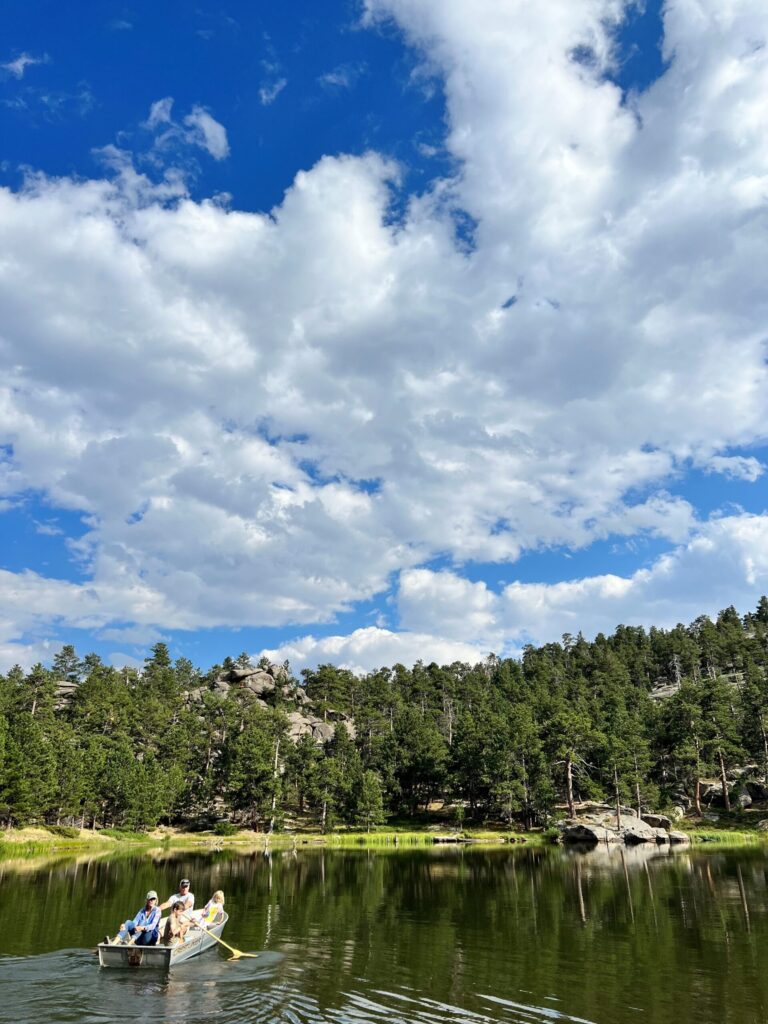
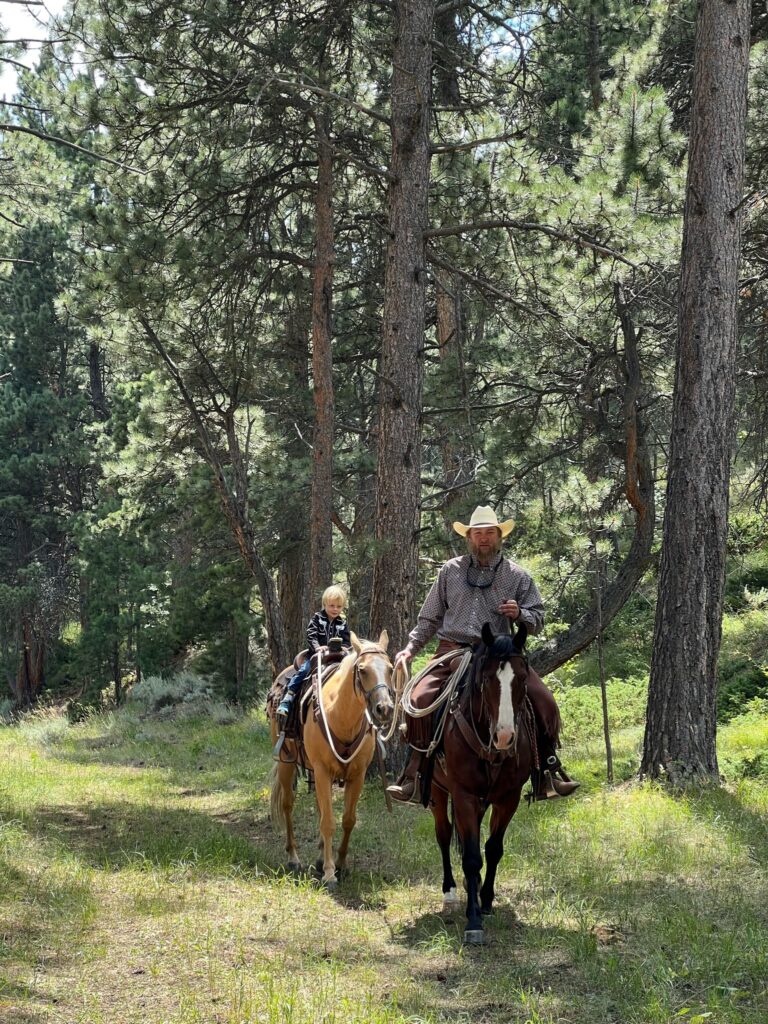
We took a drive in the afternoon, looking for a place to hike. Though Mitch knows the area and many of the details of the landscape, there is always more to discover. “There aren’t really any hiking trails; we just make our own. That’s what’s so great about this place,” Mitch intimated. So, instead of a carefully planned hike, we just drove off in one of the Wagonhound-branded white trucks until we saw an inviting-looking boulder, pulled over, and went for it. Sometimes the path up wasn’t clear; sometimes, it was tricky, and we had to find another way. Like a maze of our own making, we wound our way through narrow passages, pulled up to steep ledges, and wandered between flowers and shed horns to whatever overlook or vista we decided to explore.
Exploring with Freedom
Over the course of the trip, I became enamored with bouldering. I love the open-ended nature of the exploration, the child-like freedom of climbing without (much) fear, and the way the obstacles pushed us into a gentle competition to see who could get up the highest or find the most interesting route. After our hike, Mitch spotted an overhanging rock and smoothed the sand below it. Almost immediately, he pulled up a nearly perfect carved arrowhead. I looked at him quizzically, “Did you plant that here? Is it real?” He handed it to me with a grin, “I just saw the spot and thought, it looks like a place someone might have sat on a rainy day and made something. Once you know where to look, you can find amazing things. This place just has so much history.” As I shook my head and I stared at it, he explained other findings made in the area, including a wooly mammoth uncovered nearby. Looking around the wide landscape of rock outcroppings, low trees, and grasses, I imagined the animals and people that had inhabited, known, and crossed these lands. It was truly humbling and almost unreal—so unlike my day-to-day urban lifestyle.
A Way of Life
On one of our trail rides, we followed our guide, a cowboy named Cougar, over hills, through herds of cattle, and across rocky streams. Reserved and quiet, he was just how I pictured a quintessential Wyoming ranch hand. I felt silly; he surely judged us for our strait-laced English riding gear and eager questions. Halfway through our ride, we stopped atop an especially lovely hill crest, and he took a deep, smiling breath and finally spoke, “Isn’t it the most beautiful view?”
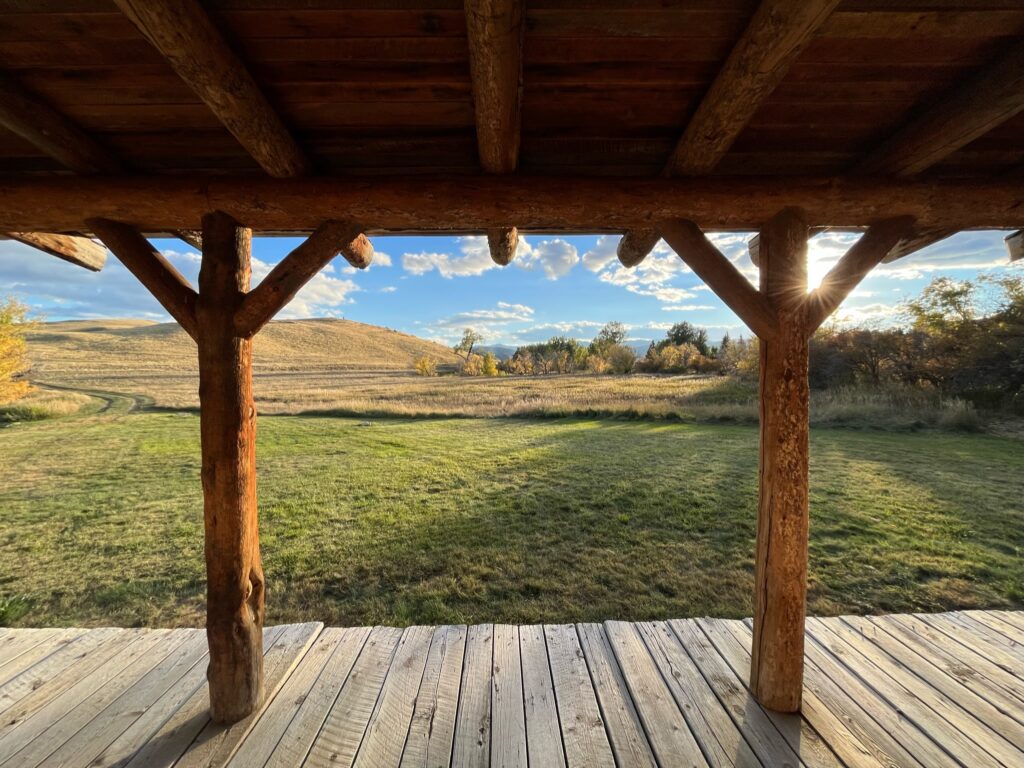
Later, we spent time with Cougar and his wife, Heather, who manages the ranch’s horses. We rode the horses in the arena, practicing some reining skills and learning about the horse operation, which has seen great success. Wagonhound Land and Livestock was the 2018 recipient of the Zoetis AQHA Best Ramuda Award, which honors the contributions of ranch horses to the heritage of the American Quarter Horse. Heather and Cougar had their 3-year-old daughter and new baby with us, crawling and playing in the dirt, riding the horses, and tagging along on the chores.
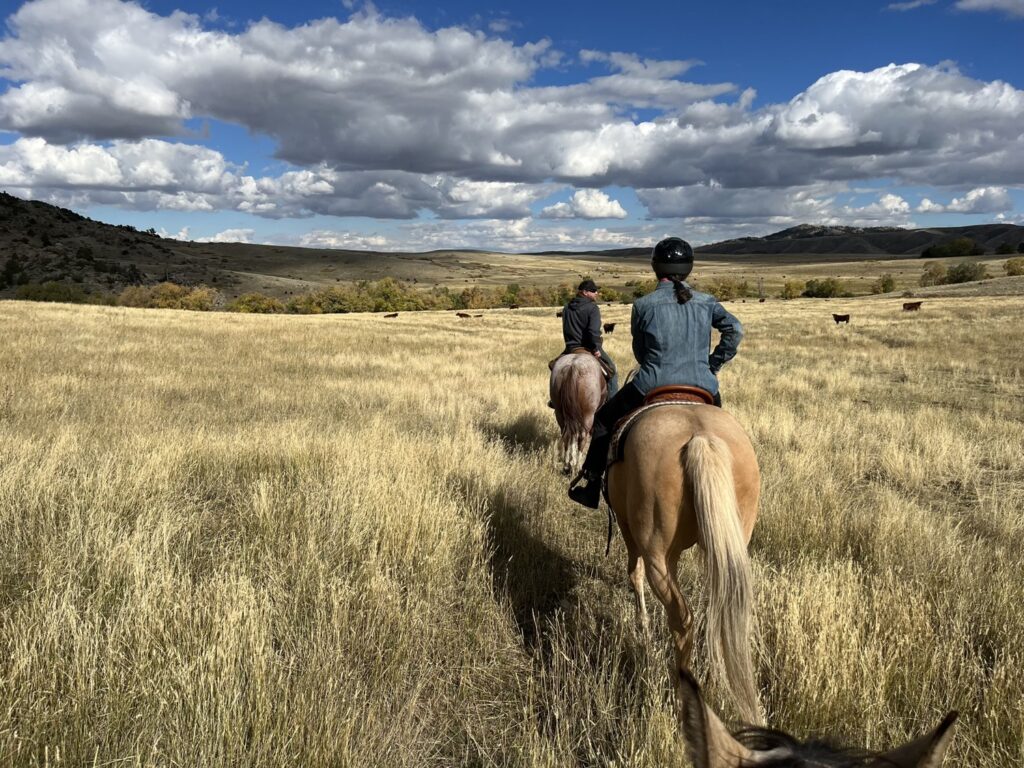
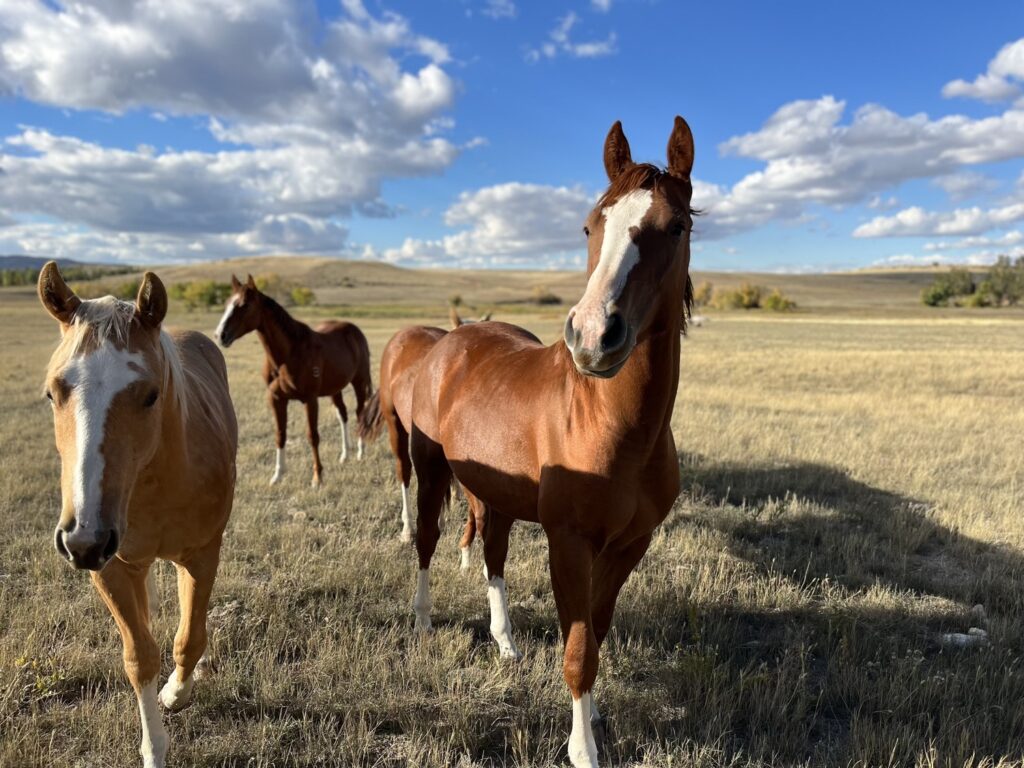
“The cowboy lifestyle is really your whole life,” said Andrea. “Caring for animals isn’t a nine-to-five thing, so you need to love it. Your spouse and kids need to love it. It’s a whole family affair.” Andrea told us that Cougar and Heather had actually met while working on the ranch and married there as well.
One More Time
On our final day, we enjoyed a long trail ride through the hills, forests, and plains, followed by a fishing excursion to a pond filled with jumping fish, complete with a pair of bald eagles circling overhead. We enjoyed a picnic lunch at the campsite prepared for us by the chef and then settled back to “shoot the breeze,” cowboy-style. Just then, Mitch checked his watch. We had about 20 minutes left before we needed to head back to pack up to catch our flight. Mitch looked at me and up to the boulder towering over the campsite. “What do you think, Jill? Could you make it up and back in time? It’s your last chance.” I felt my inner child leap at the challenge, and I jumped up. My legs, weak from all the riding, climbing, biking, and paddle boarding, propelled me to the base of the rock, and I scurried up as fast as I could. Breathless, with twigs in my hair and scrapes on the knees of my jeans, I snapped a wide-smile selfie from the top exactly 10 minutes later.
Luxury of its Own
Overall, our visit to Wyoming was not your average “luxury” trip. There is no out-of-place opulence, no swanky boutique hotel sitting like an island of sleek, modern luxury in the middle of nowhere. Instead, we experienced true hospitality—everything we could have needed or wanted, all in the context of the place. Every detail brought us closer to the authentic experience of life on the ranch. Steeped in a rich history and a connection to nature that is no longer available to most people, life on the ranch consists of relying on and coexisting with the land, the livestock, and the small but tight community of people—not just understanding, but feeling the cycles of nature, the changing seasons, the needs of the cattle, the health of the horses.

Summer 2023 will be Reid Creek Lodge’s first commercial season, and I am certain visitors will find the experience eye-opening and recharging. Andrea, in a note left by the bedside in my guest room, said, “In this modern world, as conveniences seduce us with their promise of instant gratification and efficiency, it is all too easy to lose the innate connection we all have to the land on which we live. No matter how deep it is buried, it is a part of our soul. This connection to the land feeds us figuratively and literally. It is easy to forget that this bond is as old as humankind itself. The peace, the space, the dirt, the air, they all become harder and harder to find as we move faster and faster. Wagonhound is dedicated to preserving that connection; preserving and perpetuating a way of life that necessitates a reverence for our natural environment, a continuous respect and harmony with living and non-living elements in a shared existence.”
Headquarters, a two-story building filled with a rich collection of art, western craftsmanship, historical artifacts, and more from the family collection, is a 45-minute drive from the lodge on the other side of the property. The building’s sculptures, both indoors and out, range from tabletop to life-sized. In addition to a wide variety of modern hand-crafted Western items such as saddles, braided rawhide, and clothing, there is also a stunning collection of rare, carefully preserved, Native American artifacts on display. The building is also home to a mechanical bull, arcade, carriage collection, two bars, multiple sitting areas, and dining rooms.

